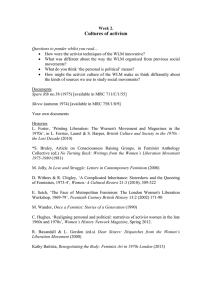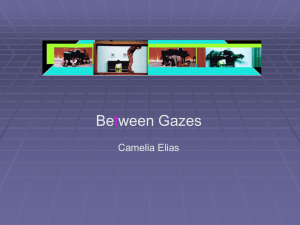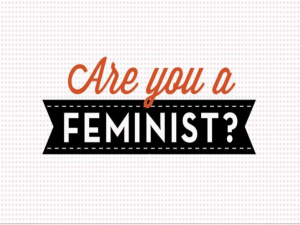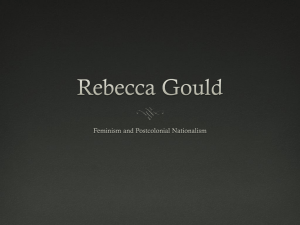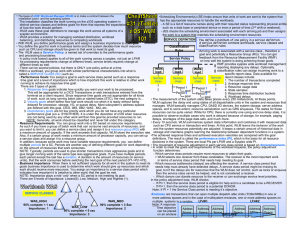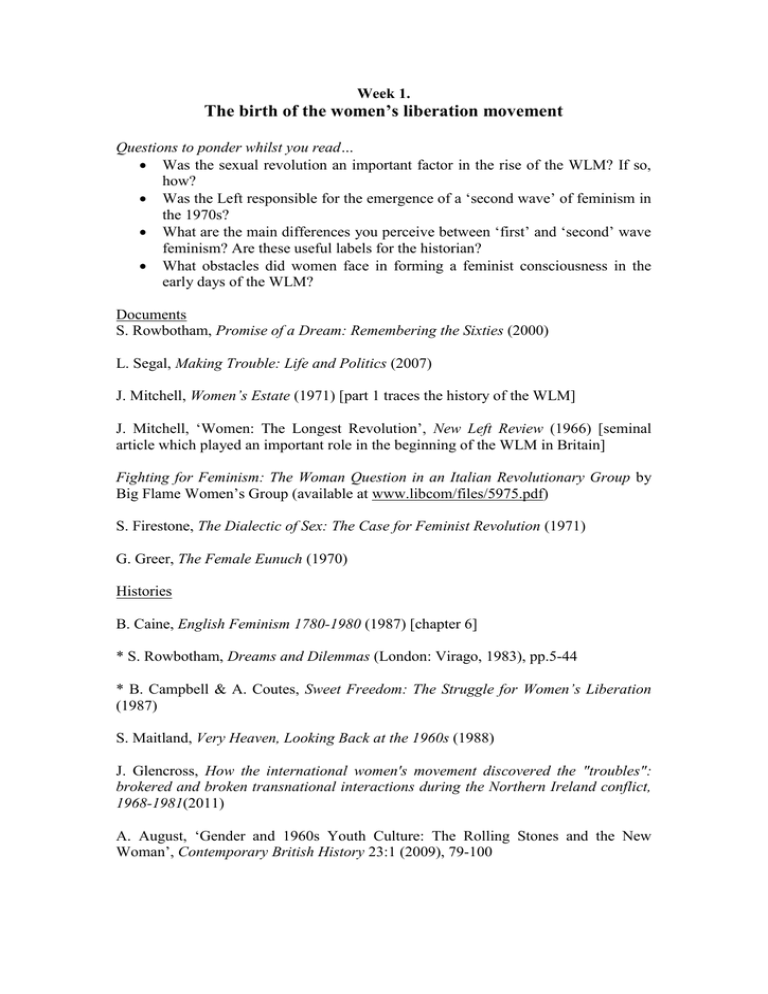
Week 1.
The birth of the women’s liberation movement
Questions to ponder whilst you read…
Was the sexual revolution an important factor in the rise of the WLM? If so,
how?
Was the Left responsible for the emergence of a ‘second wave’ of feminism in
the 1970s?
What are the main differences you perceive between ‘first’ and ‘second’ wave
feminism? Are these useful labels for the historian?
What obstacles did women face in forming a feminist consciousness in the
early days of the WLM?
Documents
S. Rowbotham, Promise of a Dream: Remembering the Sixties (2000)
L. Segal, Making Trouble: Life and Politics (2007)
J. Mitchell, Women’s Estate (1971) [part 1 traces the history of the WLM]
J. Mitchell, ‘Women: The Longest Revolution’, New Left Review (1966) [seminal
article which played an important role in the beginning of the WLM in Britain]
Fighting for Feminism: The Woman Question in an Italian Revolutionary Group by
Big Flame Women’s Group (available at www.libcom/files/5975.pdf)
S. Firestone, The Dialectic of Sex: The Case for Feminist Revolution (1971)
G. Greer, The Female Eunuch (1970)
Histories
B. Caine, English Feminism 1780-1980 (1987) [chapter 6]
* S. Rowbotham, Dreams and Dilemmas (London: Virago, 1983), pp.5-44
* B. Campbell & A. Coutes, Sweet Freedom: The Struggle for Women’s Liberation
(1987)
S. Maitland, Very Heaven, Looking Back at the 1960s (1988)
J. Glencross, How the international women's movement discovered the "troubles":
brokered and broken transnational interactions during the Northern Ireland conflict,
1968-1981(2011)
A. August, ‘Gender and 1960s Youth Culture: The Rolling Stones and the New
Woman’, Contemporary British History 23:1 (2009), 79-100
M.P. Donnelly, Sixties Britain: Culture, Society, and Politics (2005) [chapter on
women]

